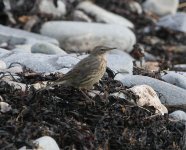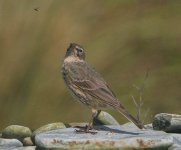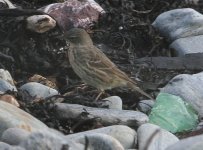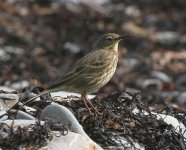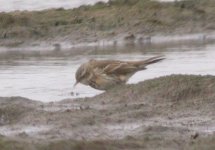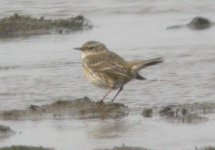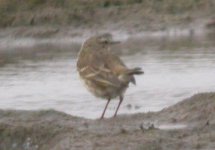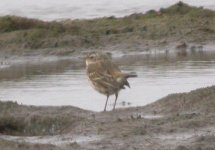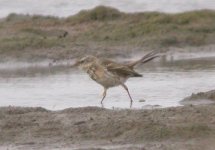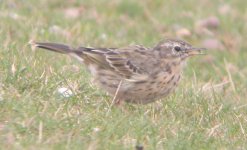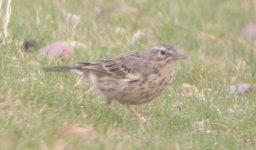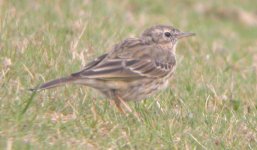StuartReeves
Local rarity
Tristan R said:Hi Stuart
The birds are beginning to moult into summer plumage, though they are not particularly advanced.
Regards
Tristan
That was my conclusion which is why I queried your comment about birds being impossible to identify in winter plumage. As I said it is this transitional plumage which apears to cause the problems, not winter plumage as such. I must admit that confronted with one of these birds in March/April with any degree of streaking on the breast and flanks, my null hypothesis would be littoralis unless it was at a known Water Pipit wintering site. I would still try and look very closely at the bird to try and confirm the ID in either direction, but I would need to be very convinced before I called a greyish bird with a pink flush on the breast and extensive streaking a Water Pipit.
This point about jizz is an interesting one and not something I have noticed. I will try and have a closer look next time I see either species.
There are some nice photos of winter Water Pipit at http://www.netfugl.dk/pictures.php?id=listpictures&species_id=565, and Rock Pipit at http://www.netfugl.dk/pictures.php?id=listpictures&species_id=564.
Most of the Rock Pipit photos were taken in Denmark and are thus likely to be littoralis but all were taken in winter so they are not that instructive here !
Stuart




